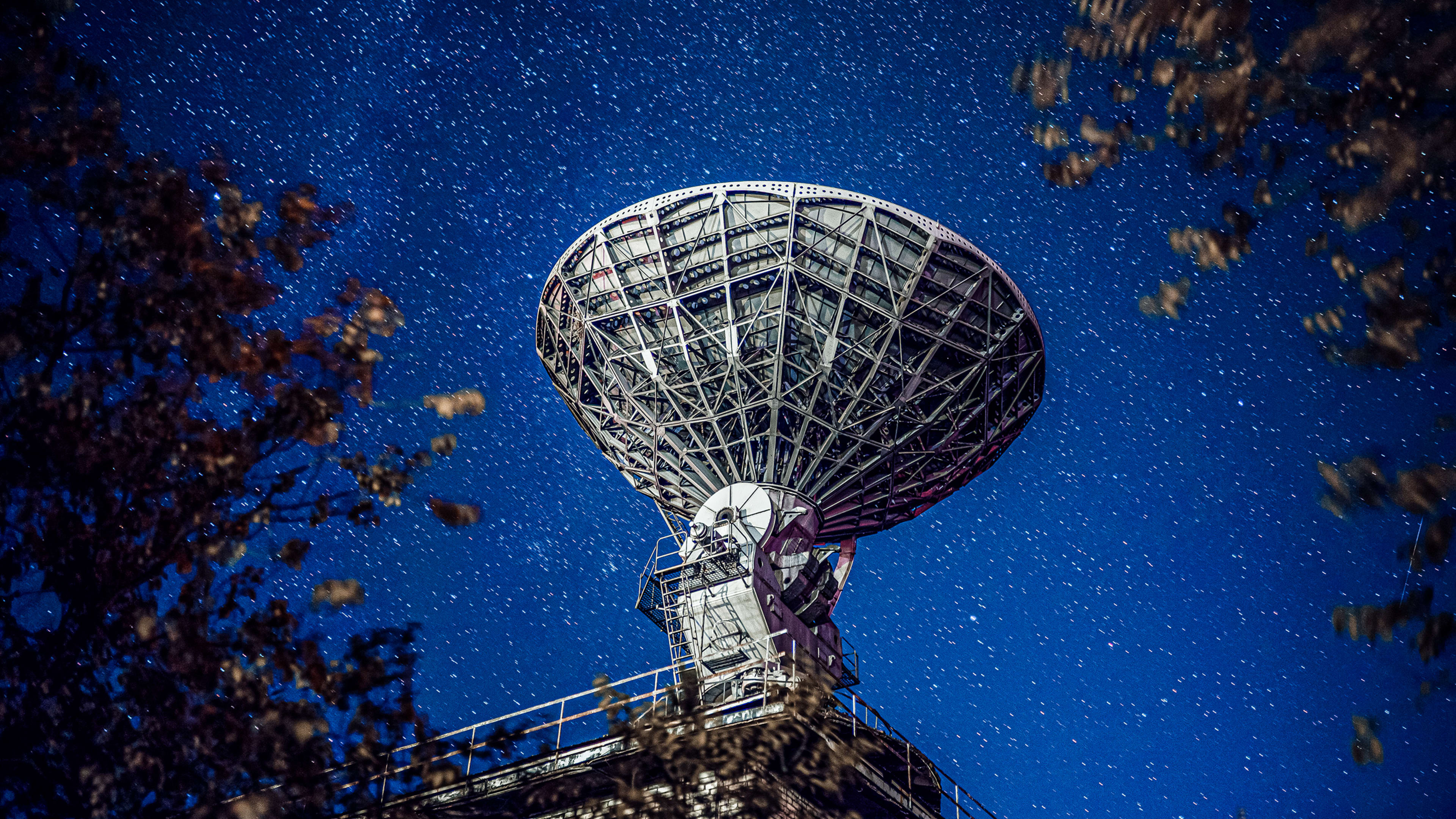In a galaxy far, far away, a single radio signal, emitted by one of the universe’s earliest atoms, began its long journey into the void. Now, 8.8 billion years later, that signal has been captured by scientists in a landmark moment for the study of space’s mysterious “dark age.”
The signal was detected by the Giant Metrewave Radio Telescope in Pune, India—a field of 30 dish antennas pointing skyward, each nearly 150 feet in diameter. And it’s the most distant signal ever to be recorded by Earthly tools, originating from a galaxy named SDSSJ0826+5630, located nearly 9 billion light years away.
It may be extraterrestrial, but it’s not E.T. phoning home. For scientists, it opens a window into the past, peering into what the universe looked like when it was just a third of its age (that’s 13.7 billion years: the estimated time elapsed since the Big Bang).
As LiveScience reports, the 8.8 billion-year-old radio wave emanated not from an ancient race of aliens, but from one of the universe’s most primeval elements: neutral hydrogen, which was formed from the debris of the Big Bang some 400,000 years after the birth of the universe. Back then, clouds of neutral hydrogen atoms scattered the early cosmos, during what astronomers call its “dark age”—an epoch before the first bright stars and galaxies emerged from the celestial dust.
“The reservoir of cold atomic neutral hydrogen gas provides the basic fuel for star formation in a galaxy,” reads a study on the telescope’s finding, published in Monthly Notices of the Royal Astronomical Society. “Understanding the evolution of galaxies over cosmic time requires knowledge of the cosmic evolution of this neutral gas.”
For decades, scientists have scanned the skies for traces of neutral hydrogen, which they hope would determine when—and how—the first stars and galaxies came into existence. (In the past, such traces have illuminated the iconic spiral of the Milky Way Galaxy, the spinning disc of the Andromeda Galaxy, and the duet of the Magellenic Clouds—all neighboring celestial objects.) But for years, the search bore limited fruit, as those signals struggle to travel across longer stretches of space and time.
Neutral hydrogen atoms emit electromagnetic radiation at a wavelength of 21 centimeters, which falls under the class of radio waves—whose longer wavelengths and lower frequencies are more likely to be drowned out in the static of the universe, according to LiveScience. Before this most recent recording, the furthest such signal to be detected was from 4.4 billion light years away.
Right again, Einstein
To capture a signal from double that distance, researchers drew upon Albert Einstein’s theory of relativity, which posited that gravity from both matter and energy could distort space and time itself. That explains an effect called “gravitational lensing,” in which a large mass—such as galaxy SDSSJ0826+5630—could warp the path of, say, a distant radio signal, into dimensions that can be reached by our planet’s probes.
“Gravitational lensing magnifies the signal coming from a distant object to help us peer into the early universe,” Nirupam Roy, an associate physics professor at the Indian Institute of Science and a coauthor of the recent study, said in a statement. “In this specific case, the signal is bent by the presence of another massive body, another galaxy, between the target and the observer. This effectively results in the magnification of the signal by a factor of 30, allowing the telescope to pick it up.”
The signal has already allowed scientists to measure the gas composition of the faraway galaxy, which is estimated to be twice as massive as any of the stars visible from Earth. And it’s only the beginning, as researchers seek to further untangle the cosmic threads of history, hidden in depths of space that were once outside our grasp.
“A galaxy emits different kinds of radio signals. Until now, it’s only been possible to capture this particular signal from a galaxy nearby, limiting our knowledge to those galaxies closer to Earth,” Arnab Chakraborty, a post-doctoral researcher at McGill University and the lead author of the study, said in a statement. “But thanks to the help of naturally occurring phenomena, we can capture a faint signal from a record-breaking distance. This will help us understand the composition of galaxies at much greater distances from Earth.”
Recognize your brand’s excellence by applying to this year’s Brands That Matter Awards before the early-rate deadline, May 3.
